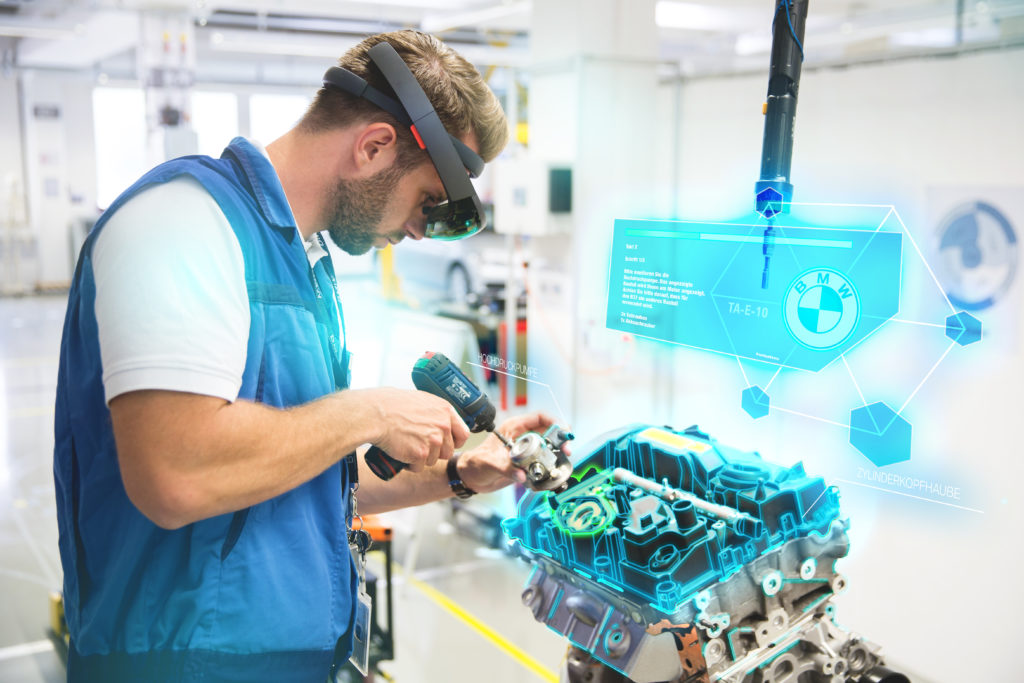The use of augmented reality, virtual reality, and 3D modeling is growing in BMW production facilities. Never one sit idle with current practices, BMW ranks as one of the premier automakers in terms of manufacturing, and as far back as eighteen months ago, AR goggles were integrated into procedures for engine assembly units. It all makes perfect sense; don the headgear, and in front of you is a perfectly accurate 3D image of where things are supposed to go.
Augmented reality and virtual reality are also making the training process itself more efficient. Not only are the technologies used for teaching trainees how things are assembled, but they also streamline the evaluation process. Previously, trainers were limited to working with one person at a time, while now, with the advent of AR, throughput has been tripled, with a total of three students able to go through training at the same time. Best of all, surveying the success of the additional capacity has yielded no changes in terms of quality.
Virtual reality, together with mountains of data gathered during several years of high-resolution camera and 3D scanner use, are being used to design BMW assembly halls and individual workstations. The digitized factory data amounts to incredibly accurate 3D imagery that allows for maximum spatial efficiency to be achieved when it’s time to adjust things for a new model or retooling.
Speaking of retooling, the BMW Group Toolmaking and Plant Engineering unit is also making use of AR. Together with CAD data of tools and machines that have been specified and then ordered, the engineers at the Munich-based facility employ AR overlays to determine whether specifications have been met. If minor deviations are detected, it might be possible to save time and rework the tool onsite, as opposed to sending it back. A total of 50 criteria are used to gain an accurate comparison. The previously tedious process has also been optimized as far as duration is concerned, with the comparative visualization occurring in only a matter of seconds.
The comparison process is also in use at BMW’s main facility in Munich. Specialists at the plant use AR on pre-production vehicles to gain a new perspective on the maturity of construction concepts. Some examples include gauging fitment of a fender or an exhaust system, or to determine whether all intended have parts have been installed.
BMW is making more of these technologies available to its production staff as the devices themselves mature. It all sounds pretty cool, and is something a lot of us could perhaps benefit from in our own garages. RealOEM diagrams are excellent, but strapping on a pair of goggles to have the entire sandwich of rear strut mount components in view before you? Sign us up.—Alex Tock
[Photos courtesy BMW AG.]
